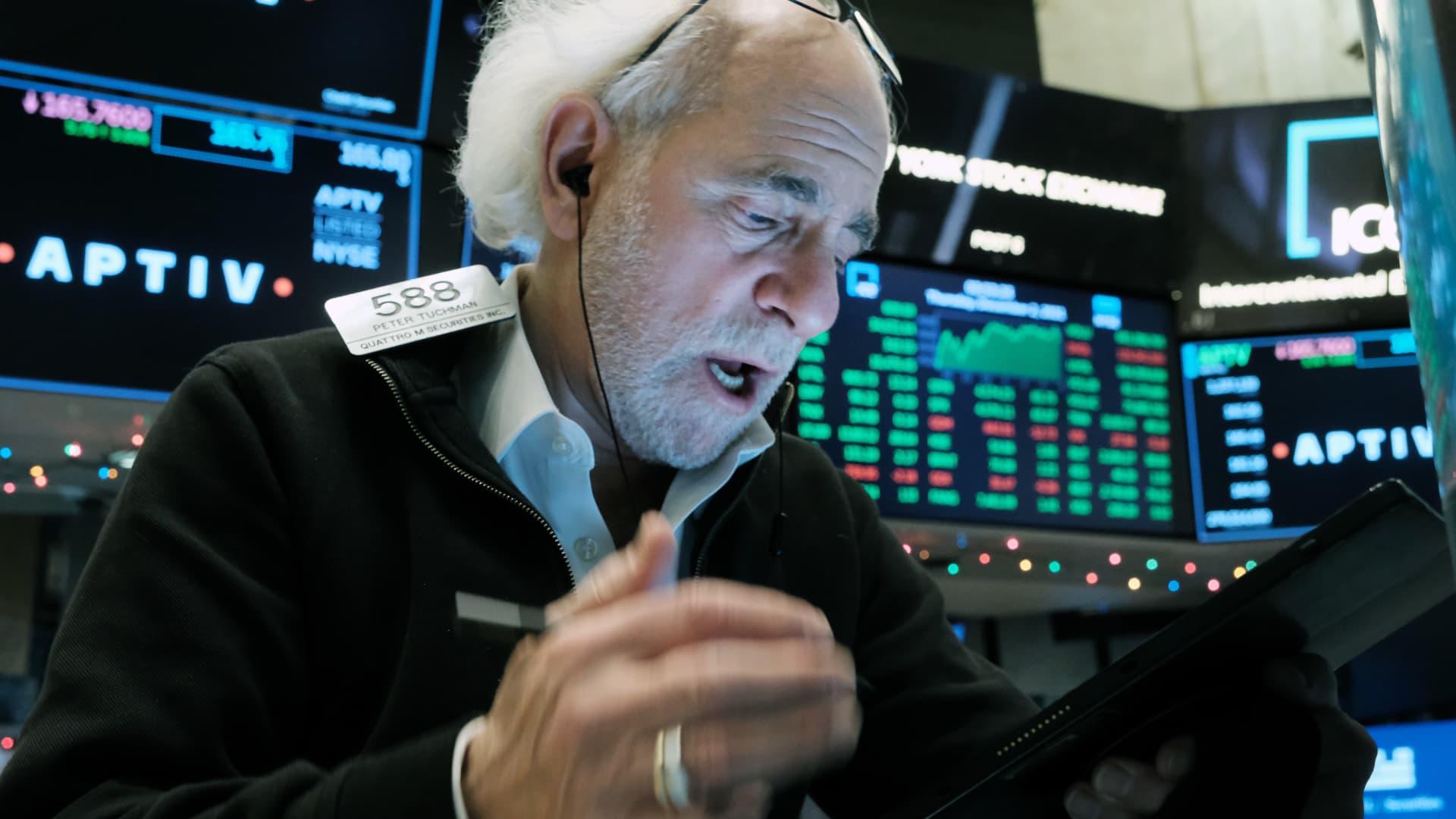Hits: 35

Stocks rose Tuesday following a brutal week as investors assessed a more aggressive Federal Reserve and rising chances of a recession.
The Dow Jones Industrial Average jumped 621 points, or 2.1%. The S&P 500 climbed 2.5%, and the Nasdaq Composite popped 2.6%. U.S. stock markets were closed Monday for Juneteenth.
Those moves followed last week’s declines that saw the S&P 500 post its worst week since 2020. Many investors fear that a rebound amid growing fears of a recession may be short-lived, though others expect that equities may be oversold after more accurately pricing in inflationary pressures.
The comeback was broad-based with 461 members of the S&P 500 in the green.
“The outstanding question is whether this is simply a bounce or the bottom,” said Sam Stovall, chief investment strategist at CFRA Research. “I think that this could certainly be a bounce but not the bottom because the one missing ingredient is a fear-based capitulation sell-off.”
Big bounces of this sort have been commonplace during this bear market. The S&P 500 has popped more than 2% on 10 other occasions since this bear began at the start of January, only to give up that gain and trade lower. Some investors have doubts that this bounce will be the one that marks the turn, especially with no apparent news or catalyst driving it.
S&P 500’s 2% gains during current bear market
| Date | % Change |
|---|---|
| 4-May | 2.99% |
| TUESDAY | 2.58% |
| 9-Mar | 2.57% |
| 28-Apr | 2.47% |
| 27-May | 2.47% |
| 28-Jan | 2.43% |
| 13-May | 2.39% |
| 16-Mar | 2.24% |
| 25-Feb | 2.24% |
| 15-Mar | 2.14% |
| 17-May | 2.02% |
Source: FactSet
Energy was the best-performing sector in the S&P 500 following a surge in oil prices. Brent crude futures traded 1.1% higher at $115.32 per barrel. West Texas Intermediate, the U.S. oil benchmark, gained nearly 2% to $111.55 per barrel.
Shares of Diamondback Energy, Exxon Mobil and Schlumberger all jumped more than 5%. Shares of Halliburton and and Phillips 66 each jumped more than 4%.
Mega-cap tech stocks also led gains. Shares of Google-parent Alphabet jumped more than 4%. Shares of Apple and Amazon both moved more than 3%.
Chip stocks posted gains with shares of Nvidia rising more than 5%, KLA jumping more than 4% and Advanced Micro Devices climbing 3%.
Elsewhere, Kellogg’s stock price rose 2% after the company said it would split into three separate companies.
Meanwhile, the yield on the benchmark 10-year Treasury note continued to march higher. Yields move inversely to prices.
The major averages suffered their 10th losing week in 11 last week on fears that the central bank will hike rates aggressively to tame inflation at the risk of causing an economic downturn. The S&P 500 dropped 5.8% last week for its biggest weekly loss since March 2020, dipping deeper into bear market territory. The equity benchmark is now more than 23% off its record high from early January.
The blue-chip Dow slid 4.8% last week, dipping below 30,000 for the first time since January 2021 last week. The tech-heavy Nasdaq Composite slipped 4.8% last week.
The steep drop in equities appeared to signify the further weakening in investor confidence in the economic outlook and the Federal Reserve’s ability to navigate a soft landing. Some on Wall Street say that earnings estimates may be the next to fall given the rising probability of an imminent recession.
“Even in the event of recession is avoided, the earnings numbers are too high because the inflationary pressure on costs is now squeezing margins, meaning our fire and ice narrative really is playing out to a tee, and we’ve priced a lot of it,” Mike Wilson, chief U.S. equity strategist at Morgan Stanley, said on CNBC’s “Squawk Box” on Tuesday. “We just haven’t priced it fully for the recessionary outcome.”
Fed Chair Jerome Powell will testify before Congress Wednesday and Thursday. His appearance comes after a recent rate hike by three-quarters of a percentage point, the central bank’s biggest increase since 1994.
Investors continued to monitor data to gauge the health of the economy. On Tuesday, the latest report from the National Association of Realtors showed sales of existing homes in May fell 3.4%, which is the weakest report since June 2020.
Meanwhile, cryptocurrencies continued their roller-coaster ride. Bitcoin fell to a new 2022 low of $17,601.58 over the weekend before climbing back above the $20,000 mark on Monday. It last jumped more than 6% to $21,453.90. The world’s largest cryptocurrency by market cap sits 70% below its all-time high hit in November.
Be the first to comment